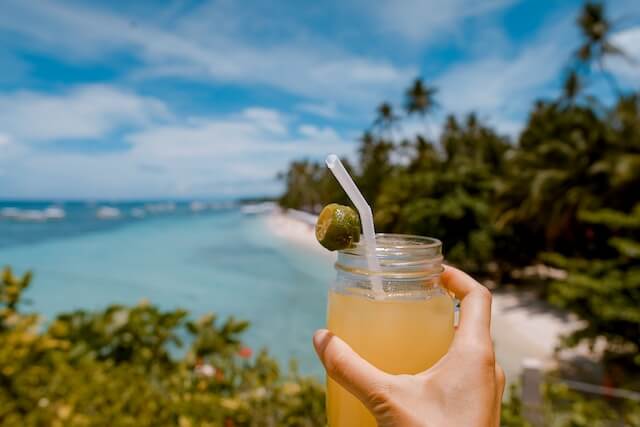Panama Holidays are an opportunity for family gatherings, celebrations, civil parades, music performances and commemorating Panamanian history and independence. People typically use this time as an opportunity to reflect upon these milestones in time.
November is an exceptionally festive month with holidays known as Mes de la Patria or Patriotic Month, featuring five national holidays for which offices and schools close on certain days.
Independence Day
Panama in November is packed full of holidays and festivities, so booking hotels early during this month can be helpful to avoid last-minute hassles. The first five days are dedicated to Panamanian national festivities known as Fiestas Patrias or Patriotic Parties that mark various events from its fight for independence from Spain.
One of the holidays celebrated annually is Los Santos Uprising Day (or Primo Cristo de Independencia). This historic event took place on November 10, 1821 when a group of citizens led by Rufina Alfaro stopped Spanish troops from invading Colon and won their independence from Spain.
Other holidays include Panama Carnival in February which features parades, music performances, food, and alcohol consumption over five days of celebrations in Panama’s largest party and one of Latin America’s rowdiest celebrations. Semana Santa takes place before Easter when towns commemorate Jesus Christ’s crucifixion and resurrection with festivities across Panama.
Los Santos Uprising Day
Panama’s holiday calendar is packed with celebrations and events, particularly during November when Fiestas Patrias (National Celebrations) commemorate battles, flags, and Panamanian independence.
On Los Santos Uprising Day (or First Cry of Independence), November 10th marks a day to remember Rufina Alfaro leading an uprising against their Spanish overlords without violence, seizing barracks without incident and leading a village into rebellion against Spanish authority.
Colon Day follows closely behind Panama’s celebration of independence from Colombia. It commemorates those from Colon for preventing an army march into Panama City by Colombia from Colombia.
These holidays often feature parades and street partying that may lead to unruliness in certain places. Be mindful that some days during these festivities are dry – meaning no alcohol can be purchased.
Semana Santa (Holy Week)
Panamanians take part in Holy Week festivities between Thursday, Friday, and Saturday preceding Easter – a major holiday celebrated throughout Spanish-speaking countries and often seen as cities, towns and villages come alive with vibrant celebrations and brightly-hued celebrations.
These processions, typically lasting a week-long processions led by local brotherhoods and featuring endless rows of nazarenos (penitents), include candles, torches, wooden crosses and elaborate “thrones” featuring scenes depicting scenes from Jesus Christ or Mary’s suffering and sorrows. Most towns and villages take approximately four hours for these parades to travel their narrow streets.
National Symbols Day marks a public holiday where schools and businesses close. Additionally, this day is traditionally observed with eating “Torrija”, an old bread dish dipped into milk before being deep-fried for breakfast!
National Anthem Day
Panamanians take great pride in celebrating national holidays as an expression of their patriotism, reflecting this sentiment through national holiday celebrations. Given Panama’s varied history of indigenous cultures, colonization by regional European powers, and US influence – national holidays provide a wonderful opportunity for reflection and learning about their nation.
Panamanians take great pride in their national anthem and schools, university groups, police academies and independent bands practice it regularly to be ready for annual parades. The national anthem captures both culture and history of their nation; often heard at sporting events or official ceremonies.
Flag Day in Panama is a day for showing patriotism and celebrating independence; Panamanians also take pride in celebrating Father’s Day by giving three days’ paternity leave for new fathers.
Colon Day
Panamanians love to celebrate, particularly on national holidays. One major event includes Carnival – a street festival similar to Brazil’s Mardi Gras – when locals gather to dance along popular music as water tanks spray water onto them from above. Police may increase street crime at these times so take extra caution while attending these celebrations.
Colon Day, celebrated annually on November 5, is an important commemoration in Panama. This day commemorates its fight for independence against Colombia without firing a single shot.
This day also commemorates the adoption of Panamanian flag in 1925, with parades and displays of patriotism across the country usually marking this momentous event. Unfortunately, due to coronavirus outbreak this year celebrations have been reduced in scale.
Flag Day
Panama is an incredibly proud nation, thanks to its long and distinguished history of indigenous culture, regional conquest, European exploration, US influence and independence formation. This pride can be seen during national holidays held annually in November called Fiestas Patrias (Patriotic Parties), with parades, food and drinks serving as reminders of events which shaped Panama into what it is now.
In November, most non-tourist companies close down for an entire week, leaving public transport and beaches more busy than normal. It is the happiest week of the year in Panama; don’t miss it! Every building in Panama City raises the Panamanian flag during this week-long celebration; parades take place, music plays throughout bars and restaurants and shops and the national anthem plays continuously – it truly makes this week in Panama truly memorable!

